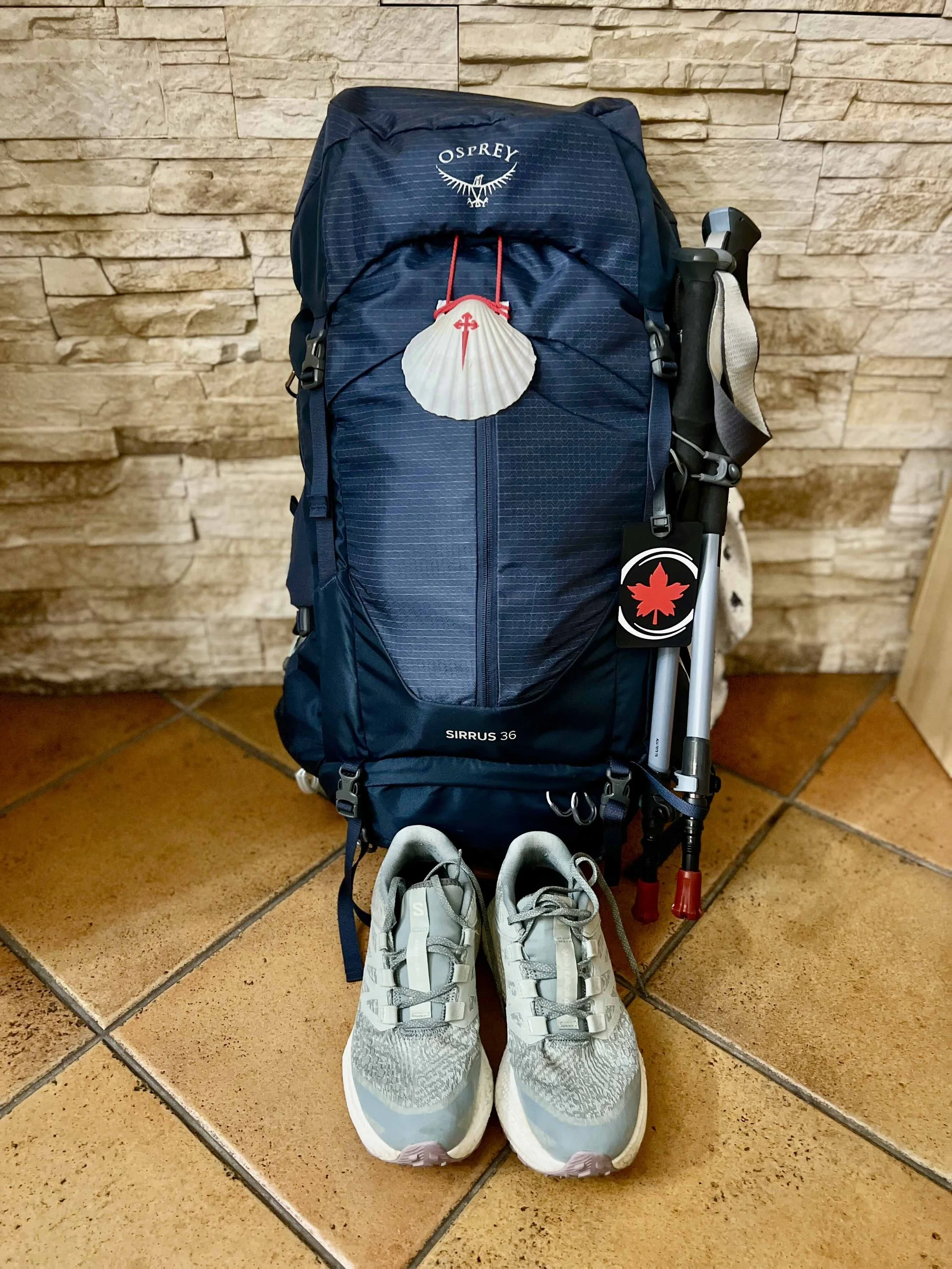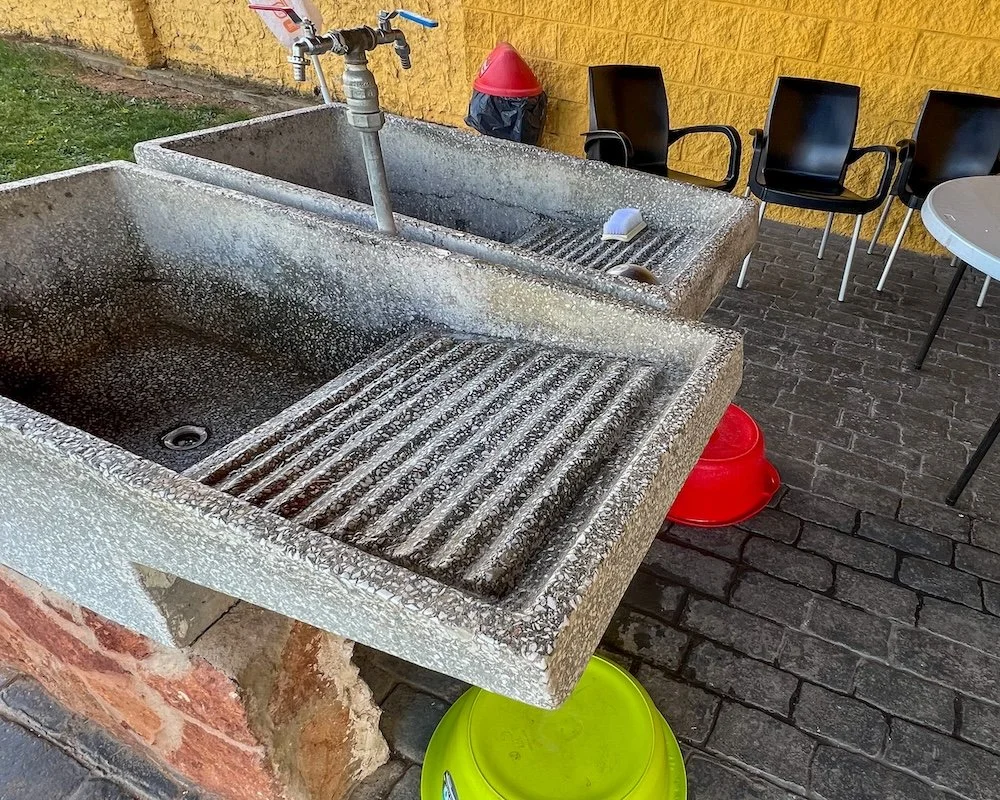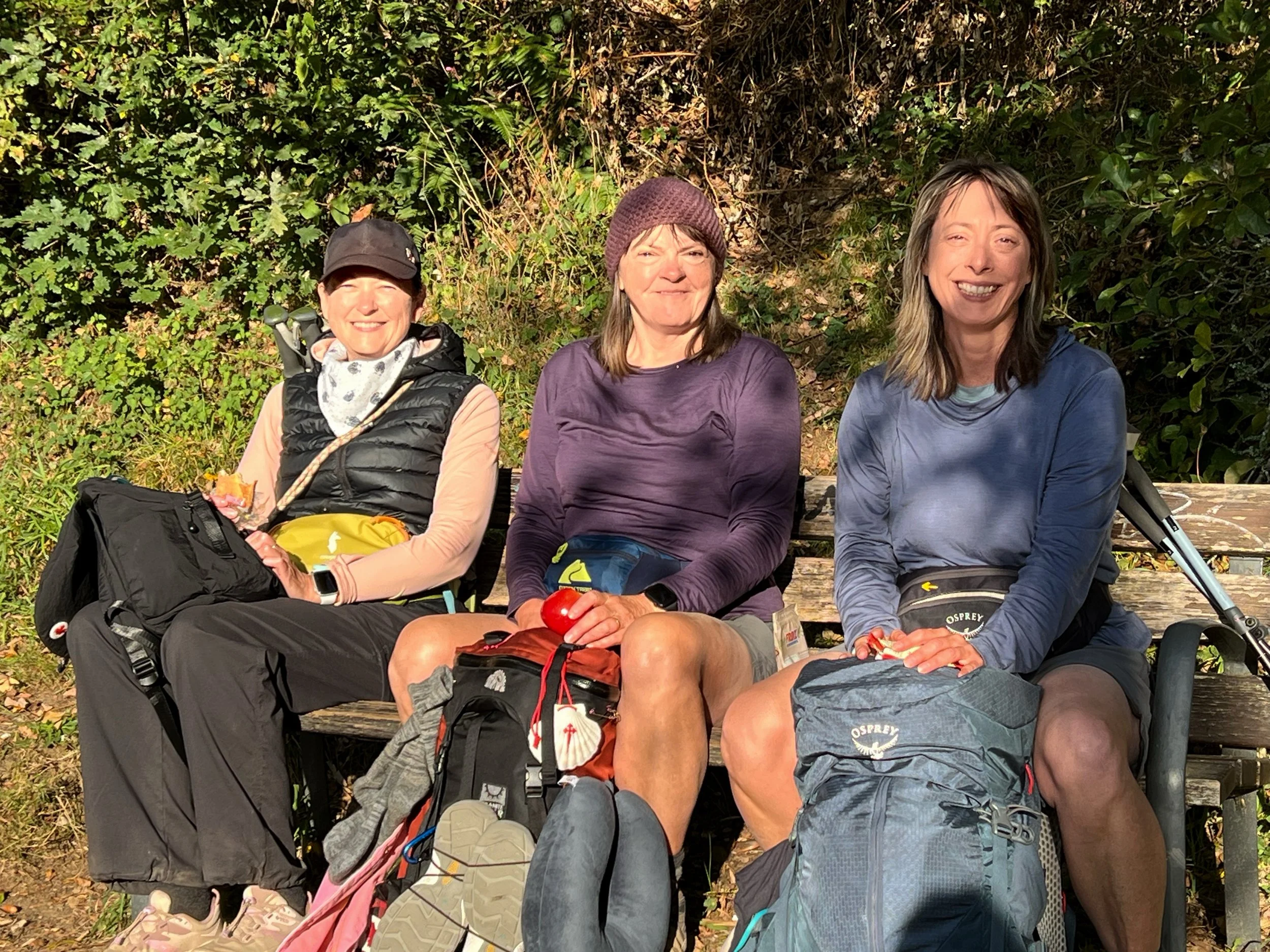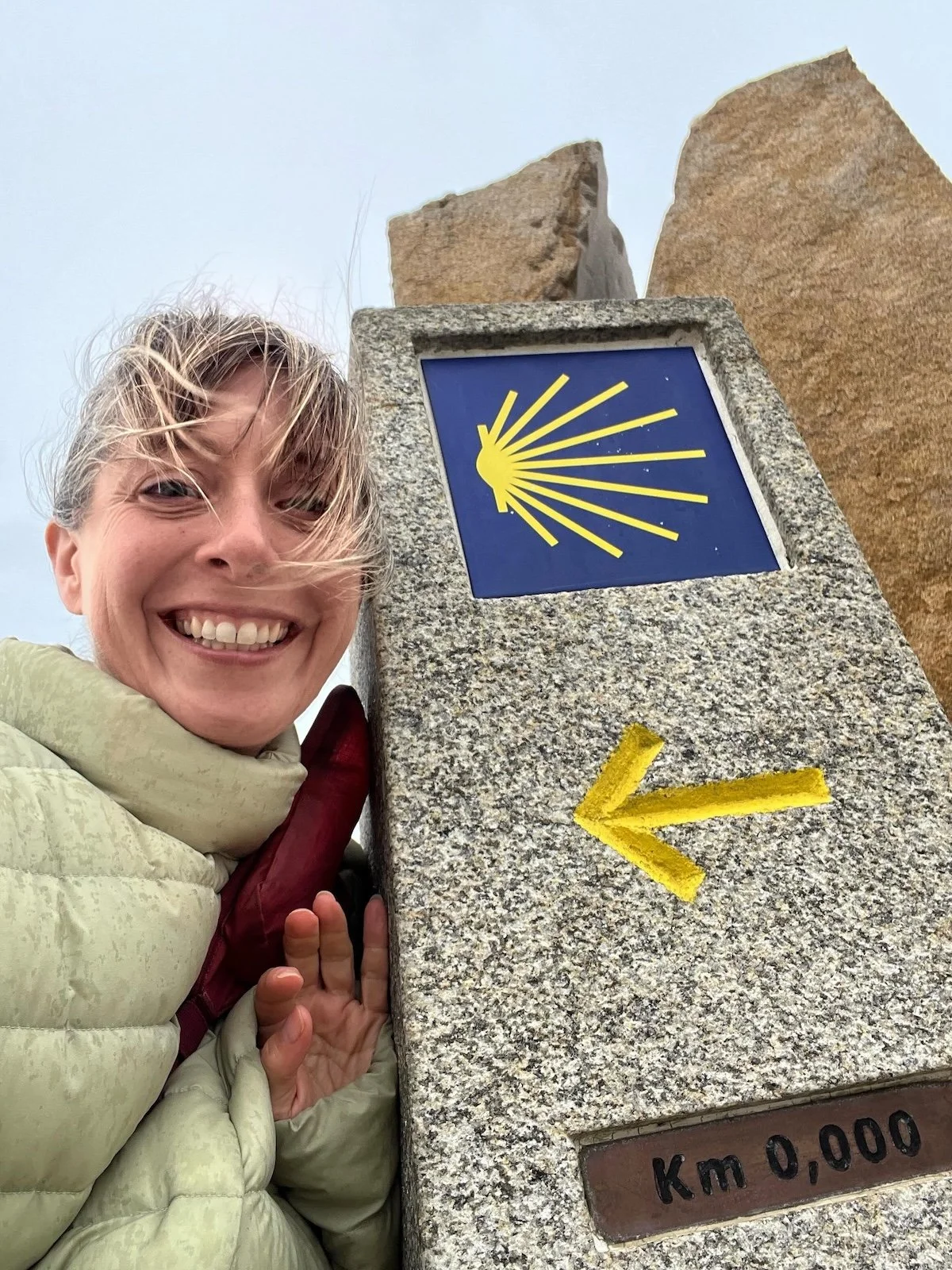Walking to Santiago: Discovering Beauty and Freedom in Letting Go
Third time’s the charm.
After two previously postponed attempts, I finally walked the Camino Francés from León to Santiago de Compostela.
About 350 kilometres later, I returned lighter, both in what I carried and what I thought I knew.
This wasn’t the Camino I first imagined.
And that’s exactly the point.
The walking taught me more than planning ever could.
Me on my Camino. 📸TNetzer
Before the Trip: My Pre-Camino Intentions
In a post before I left, I wrote about the effort it had taken me to get here. From postponements to cancellations to conflicting priorities, it took me three tries to finally say yes.
Even as I packed my bag, I still wondered: Was the Camino right for me? Was this Camino right for me? Would it live up to the stories and expectations?
I set out with simple but real intentions — Empowerment · Presence · Gratitude
Some of those intentions unfolded exactly as I hoped. Other feelings surprised me completely. (Isn’t that the whole point of pilgrimage?)
Note: This Is MY Camino Francés Experience
Some people walk the full 800 km from St. Jean Pied de Port. I started in León.
I met pilgrims who walked for seven days, others for forty-five. I walked sixteen.
Some carried everything on their backs. Others sent bags ahead. I schlept my backpack every day except for two.
Some walked solo, some with a partner, and others in a tour group. I walked with two girlfriends.
Some booked charming pensions; others stayed only in albergues. I did a mix of both.
Every version is valid.
That’s the magic of the Camino — everyone walks their own way.
There’s no gold star for distance, no right or wrong approach.
Just millions of footsteps, each with its own story.
Here’s a bit of mine.
1. Simplicity Isn’t Glamorous — But It’s Honest
The Camino, it turns out, is an exercise in essentials.
Your world shrinks to the basics: water, food, dry socks. “Camino clean” becomes a thing — if it doesn’t smell too bad, it’s good enough.
By day five, I’d already lost a full outfit (including one of my three pairs of underwear) and, oddly enough, I felt lighter. Somewhere between the bunk beds, the laundry sinks, and the rhythm of walking with the sunrise, something shifted.
I remember one afternoon - sitting on a picnic bench in the grass behind a very basic albergue high in the hills, my damp socks flapping on the line in the sun. My pack felt lighter than it had in days, my hair doing its own thing, and I thought — this is it. No makeup, no mirrors, no excess. Just enough.
I didn’t need more.
I needed less.
Simplicity isn’t glamorous. It’s not Instagram-pretty. But it’s real. And in the quiet, between washing socks and underwear and waiting for the warm sun to do its thing, I started to feel a kind of peace and acceptance — the kind that sneaks up when there’s finally nothing left to prove.
It felt like a quiet exhale — a release from all the performing, comparing, and keeping score. Out there, without my usual roles, routines, or comforts, I remembered that I didn’t have to earn my right to rest, to belong, or to be enough.
I quietly dropped the invisible scoreboard that the world trains us all to chase. In that letting go, I found something simple, and it felt good — I was finally content being exactly who I was, right where I was, with my semi-clean socks almost dry.
2. There’s a Culture on the Camino — and It Finds You
There’s a vibe on the Camino I didn’t quite understand from reading the guidebooks. It’s a culture of kindness and quiet camaraderie — a sort of shared heartbeat beneath the sound of boots and walking poles.
A home along the way (no one around) with drinks, food, and a place to sit.
A friendly “Buen Camino” is the universal nod of I see you.
A blister-prevention tip from a stranger who’s clearly earned their wisdom.
A quiet understanding between tired bodies moving in the same direction.
This culture shows up among pilgrims, of course, but also among the locals along The Way — the bar owners who smile and suggest a “grande café” early in the morning, the albergue hosts who hand you lemon water like it’s medicine, and the person who lays out a table like a feast for a midday snack, all by donation. They see thousands of pilgrims every week, yet their kindness never seems to fade. Maybe it’s empathy, or maybe it’s just good old-fashioned humanity — either way, it sticks with you.
Ironically, I appreciated the power of this culture most during the final 100 kilometres when the pilgrim camaraderie started to feel a little fragile. Many people begin their Camino in Sarria, the shortest distance needed to earn a Compostela on the Camino Francés. With a flush of new faces, I struggled with all the new pilgrims who hadn’t yet settled into “how to be a pilgrim.” My frustration is a little embarrassing to admit.
And then it hit me: when I first started, I was likely just like them. To those who’d already been walking for weeks, I must’ve seemed green, a little self-absorbed, maybe a bit too fresh and eager.
That thought softened me. Camino culture isn’t taught — it’s absorbed.
You build it by walking, by hurting, by helping, by caring, by understanding alongside others.
Kindness becomes the shared language when everyone’s carrying their own version of tired.
And here’s what I came to realize — no matter where you start, the Camino has a way of shaping you. If you let it, somewhere along the path, whether it’s day six or day sixteen, you stop being a person walking the Camino and quietly become a pilgrim.
3. The Camino Provides
Before I left, I wanted a plan. So I made one.
Then I ditched most of it.
Somewhere along the way, I stopped trying to orchestrate and started trusting. A bed always appeared. A meal showed up. Even the steepest climbs offered views that made me stop and take it all in.
I’d heard the phrase “The Camino provides” before I went, and honestly, I was skeptical. It sounded a little too neat, too mystical. But eventually, I started to get it.
Like the night we descended into El Acebo, exhausted, and found the first albergue full. The owner pointed us down the road to another place run by two volunteers from the U.S. Not only were there beds, but it turned into one of the most memorable evenings of the trip — a communal dinner, a group walk to watch the sunset, and lively conversation over breakfast the next morning. All by donation.
Tres Amigas
Or the day we sat on a bench just off the path, sharing apples and nuts, laughing about everything and nothing. I thought about setting up my camera to capture it — three friends in sync, tired and happy — and then a passing pilgrim stopped, smiled, and said, “You three look lovely. Want me to take a picture?” We later met her again in Santiago and all laughed, remembering that tiny moment of connection.
And then there was “V,” a seasoned pilgrim who had walked the entire Francés route. She spoke fluent Spanish and somehow became our translator, guide, and steady companion all at once. Through her friendship, we met other pilgrims, decoded menus, and got a deeper glimpse into the rhythm of the full journey.
By the end, I believed it.
The Camino provides — not like magic, but through people, timing, and the quiet willingness to trust that what you need will find you.
Trusting the process isn’t passive; it’s active faith in motion. It’s believing the next step will appear, even when you can’t see it yet.
A Final Word: From Pilgrim Steps to Creating a Guide for Yours
I walked my Camino.
It wasn’t always easy or graceful.
But it was honest.
And it was enough.
There are things I’d do differently — and I know another Camino would bring a whole new set of circumstances and a fresh cast of characters.
Next time:
I’d expect rain (it seems impossible to escape it twice), and I probably need to learn how to handle it better.
I’d double-check that nothing’s left on the clothesline, because even if I did adjust fine… a third pair of underwear would’ve made life a little easier!
I’d be okay skipping some rooms with fresh sheets and towels and choosing more of the simple albergues — the ones with communal dinners and conversations that stretch into the evening.
I’m glad I kept a daily reflection journal and took photos along the way. Next time, I might add another layer — maybe a quote of the day or a question to ponder — just something small to anchor myself in intention.
If you’re dreaming of embarking on your own version of a pilgrimage — whether it’s along a trail, through a life transition, or into a fresh new year — I’ve created something to help.
The Pilgrimage Path: 21 Days of Curiosity & Courage is a self-paced journey with simple, meaningful invitations to help you reconnect with awe and clarity. It opens soon, and you can walk/write it/”art” your way through it at your own rhythm—daily or whenever you feel drawn in.
If you’re curious now, begin with the Pilgrimage Primer, a free workbook and audio reflection to help you settle, soften, and step toward what’s calling you.
It truly begins with a single yes.
With that yes, your pilgrimage begins.
Buen Camino.
I hope this article helps you to plan your next adventure! Looking for more guidance?
Are you struggling with deciding on where to next? Travel Coaching might help!
Check out Ignite Your Inner Explorer, a coaching package to transform your travel whims an wishes into extraordinary journey ideas tailored just for you.












